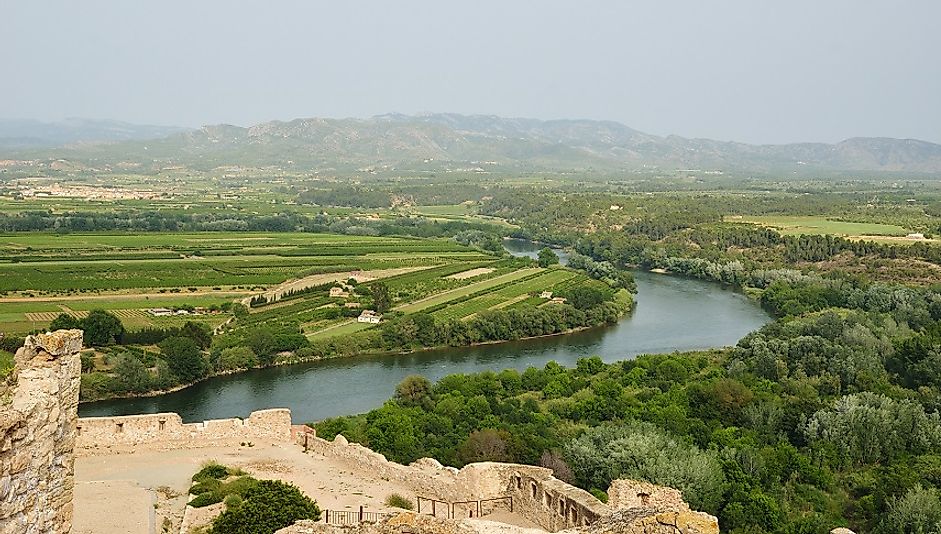The Ebro River Of Spain

5. Description
The Ebro River is one of the most important rivers on the Iberian Peninsula in Spain, and the second longest river therein. The river, along with Tagus, has the second largest discharge volume after only the Duero River. The flow of the Ebro River is to the southeast course to its delta, which is 910 kilometers away from it source in Pico Tres Mares, emptying into the Atlantic in the Tarragona Province. The drainage basin of the Ebro River is the largest in Spain at 33,000 square miles. It receives water from nearly 200 tributaries and is used for the production of hydroelectricity.
4. Historical Role
The Ebro River was used as the dividing line between the Republic of Rome and the Carthaginians from 264 BC until 241 BC after the First Punic War. The Second Punic War fought between the Romans and the Hannibal’s after the witness of treaty violation by the Romans made the city of Saguntum their protectorate. The earliest monastery of Royal Monastery of Our Lady of the Wheel is also located near the banks of the Ebro River in Aragon, which was established in AD 1202. This monastery also carries a historical significance because of the building of first waterwheel for the generation of power. The flow of the Ebro River diverts from here for creating a hydrological central heating system for the buildings. The year 1938 also witnessed the Battle of Ebro for defeating the Republican forces.
3. Modern Significance
There are many comfortable accommodations made for the tourists near the Ebro River so that people can enjoy fishing activities, bird watching, walking around and pursue various activities in the rural towns of Catalonia. The "home stay" varieties of accommodations provide ideal facilities for families or groups of friends. Such activities as canoeing, cycling, and wine tours are also organized. There are many major wine regions near the river, including La Rioja, Alava, Navarra, and Zaragoza. However, the focus is on the Rioja Wine, which provides traditional quality to the tourists. The wildlife of the area is the main attraction for the tourists as the bird watchers can spot terns, flamingos, and reed warblers, and in the whole of the Europe, this is also known as one of the best fishing destinations.
2. Habitat and Biodiversity
The area is also rich in habitats for many fish species. They are bass, monster Wels catfish, zander, and carp fishes found here in abundance, as well as Crucian carp, Common and Mirror carp, roach, daces, Black bass, chubs, Sea bass, gudgeons, and many more species. Among the many migratory birds found here include the Audouin’s gulls, and nearly 15,000 pairs are annually recorded near the delta.
1. Environmental Threats and Conservation
The major threats posed the river involve government actions, such as wanting to divert its water source to the drier regions in other parts of Spain. The sediments in the region protect the wetlands but, with the construction of the dams, this effect is reduced by 90%. So, for the purpose of conservation, the Ebro River Basin Management Plan was initiated, in which the parts of the Ebro's water will be distributed equally, but still this also faced rejection by a number of critics.











